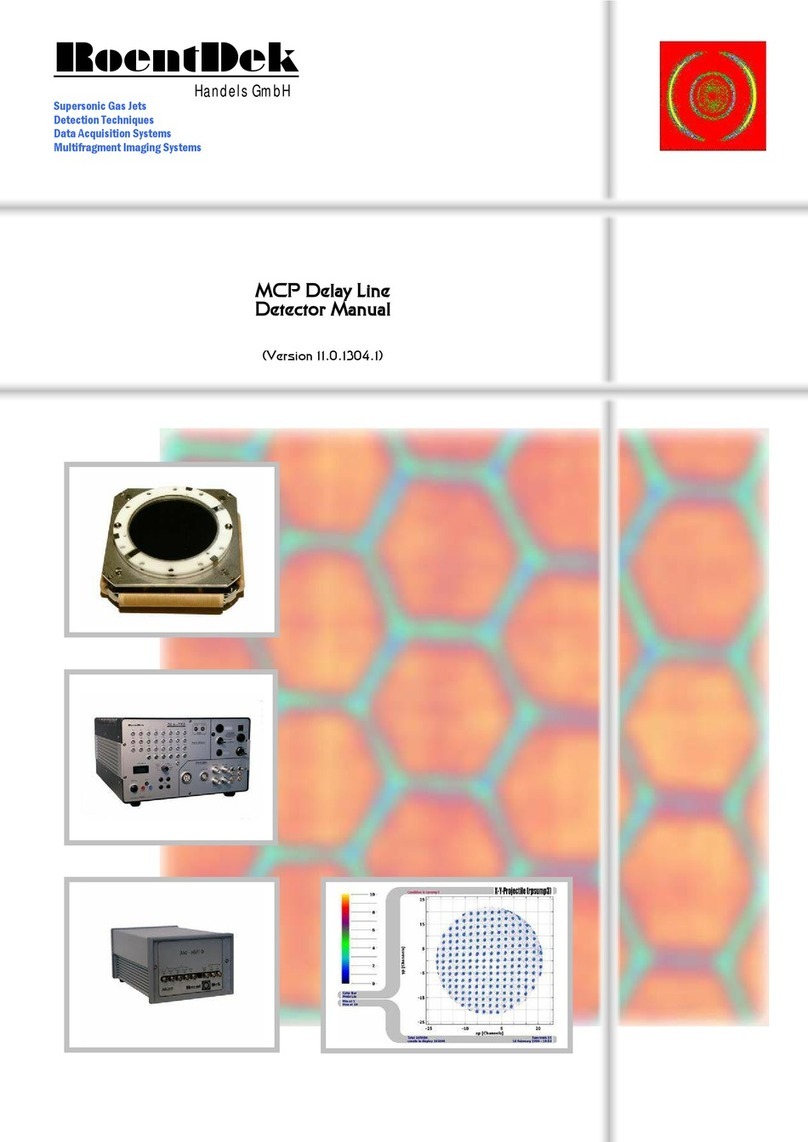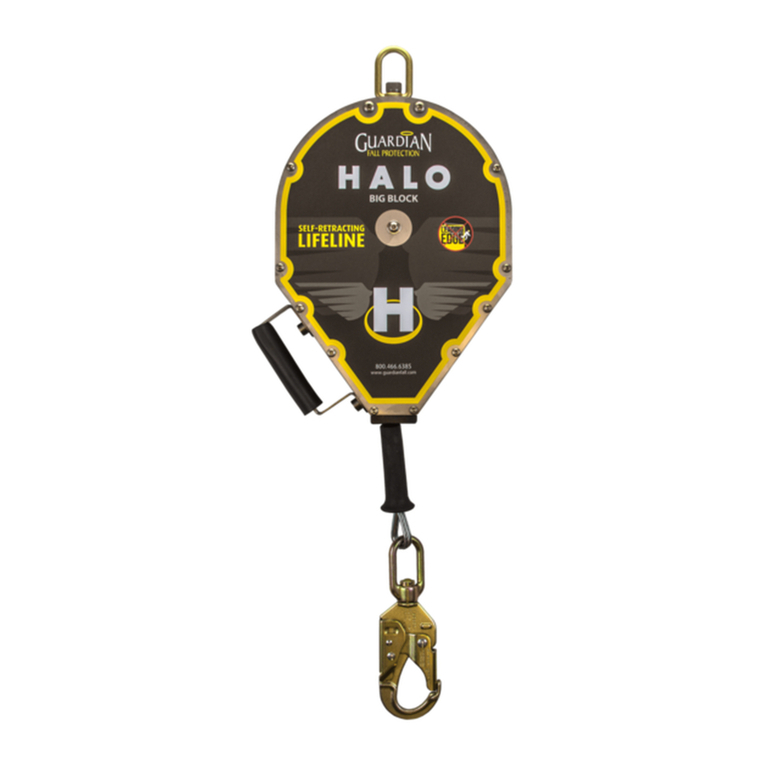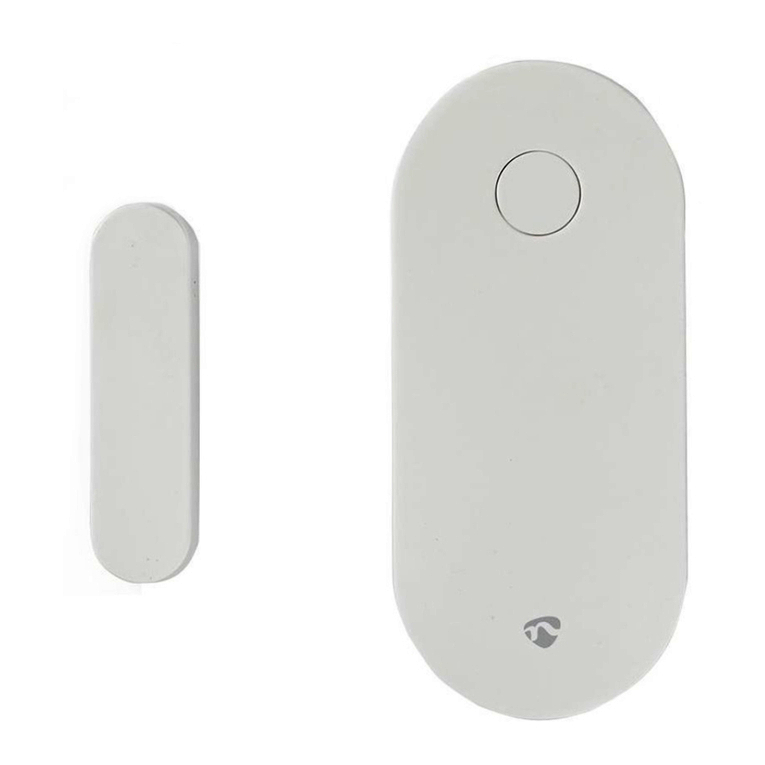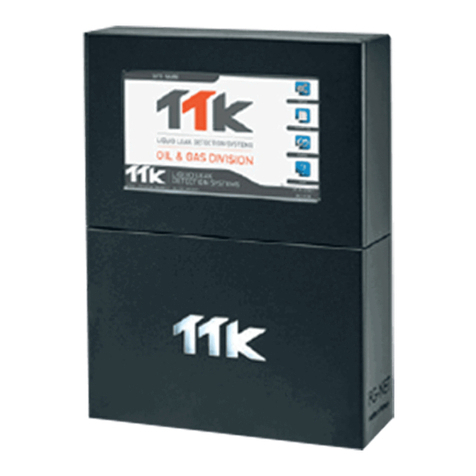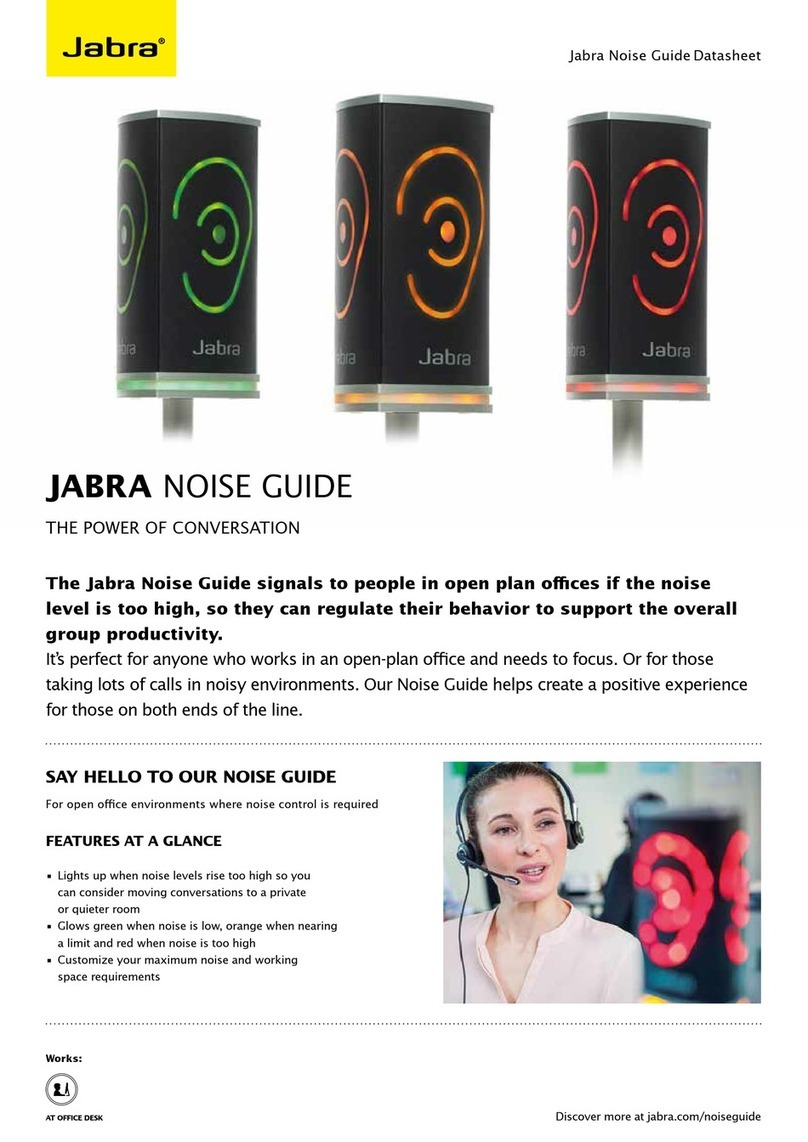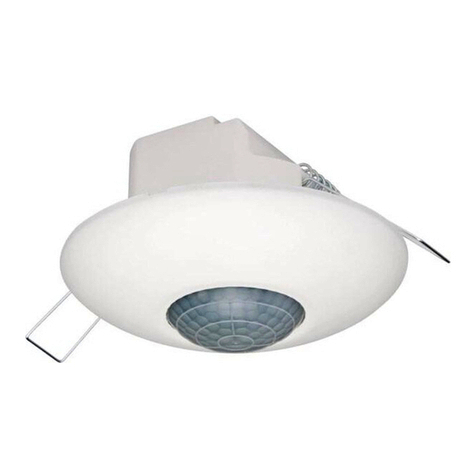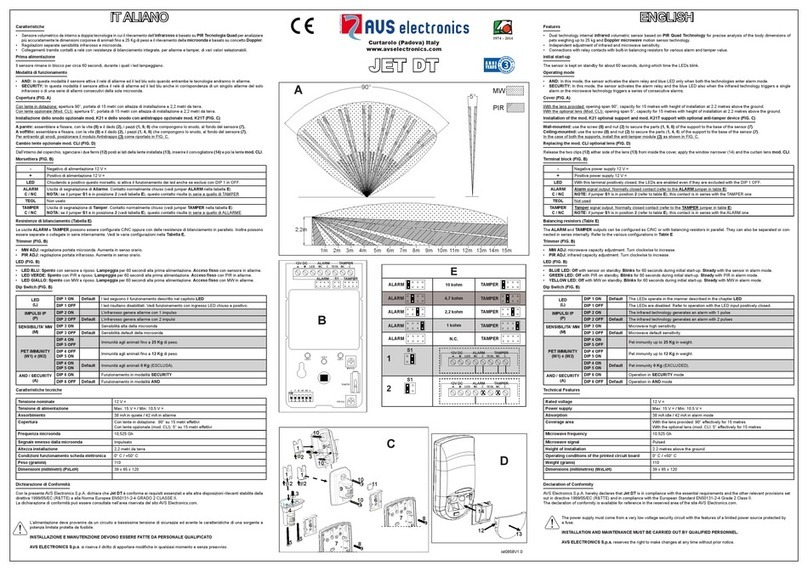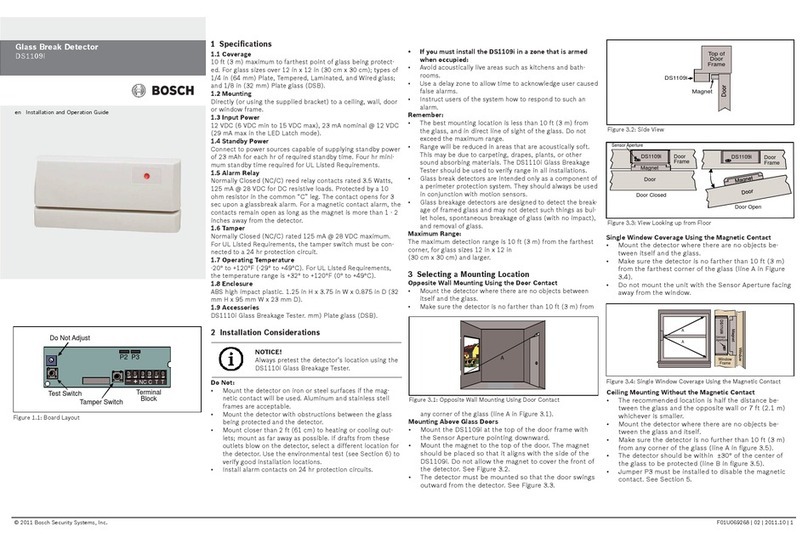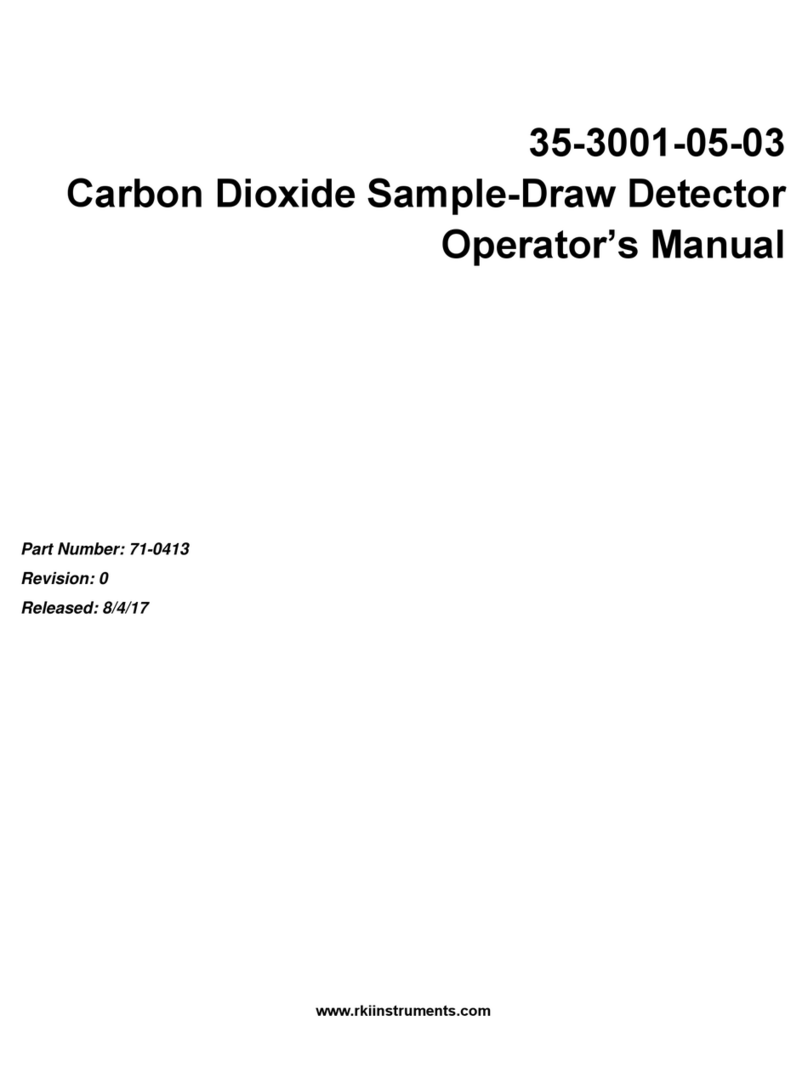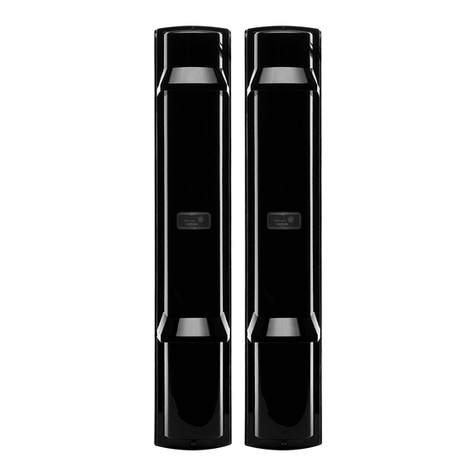RoentDek DLD40 User manual

RoentDek
HandelsGmbH
Supersonic Gas Jets
Detection Techniques
Data Acquisition Systems
Multifragment Imaging Systems
MCP Delay Line
Detector Manual
(Version 6.2.90.5)

MCP Delay Line (Version 6.2.90.5) Page 3 of 80
Table of Contents
1DETECTOR SYSTEM - COMPONENTS...............................................................................................................5
2THE MICROCHANNEL PLATE DETECTOR .....................................................................................................7
2.1 CHARACTERISTICS................................................................................................................................................. 7
2.1.1 Physical Characteristics of the Detector - Specification ........................................................................7
2.1.2 Physical Characteristics of MCPs................................................................................................................7
2.1.3 Electrical Characteristics of the Detector ....................................................................................................7
2.2 GENERAL DESCRIPTION......................................................................................................................................... 8
2.3 POSITION ENCODING ............................................................................................................................................. 8
2.4 ASSEMBLY OF THE MCP-DETECTOR ................................................................................................................... 10
2.4.1 List of Detector Assembly Parts..................................................................................................................10
2.4.2 Preparation.................................................................................................................................................11
2.4.3 Now the detector can be finally assembled.................................................................................................12
2.4.3.1 Connecting the Wires to the Delay-line Anode.........................................................................................................12
2.4.3.2 Assembly of the MCP-stack for the DLD40, DLD80 and HEX80 ...........................................................................13
2.4.3.3 Assembly of the MCP-stack for the DLD120 and HEX120 .....................................................................................16
2.4.4 Mounting the Detector an experimental setup............................................................................................18
2.4.5 Connecting the Signal Cables to the Feedtrough Flange ...........................................................................19
2.4.6 Operation of the Delay-line Detector – General Description.....................................................................21
2.5 THE FT12(16)-TP................................................................................................................................................ 22
2.6 THE ATR19 AMPLIFIER &CFD MODULE ........................................................................................................... 23
2.6.1 Signal inputs and amplification ..................................................................................................................24
2.6.2 The DLATR board.......................................................................................................................................27
2.6.3 CFD controls and outputs...........................................................................................................................27
2.6.4 Connecting and operating the ATR19.........................................................................................................29
2.6.5 Opening the ATR19 module........................................................................................................................30
3DATA ACQUISITION HARD- AND SOFTWARE..............................................................................................33
3.1 THE TIME-TO-DIGITAL-CONVERTERS (TDC) FOR PC.......................................................................................... 33
3.1.1 The HM1 / HM1-B......................................................................................................................................33
3.1.2 The TDC8....................................................................................................................................................34
For details of the TDC8 module versions please refer to the separate manual.................................................................................35
3.1.3 The CCC1 ...................................................................................................................................................36
3.2 HARD-AND SOFTWARE INSTALLATION ............................................................................................................... 36
3.2.1 HM1 / HM1-B.............................................................................................................................................36
3.2.2 TDC8...........................................................................................................................................................38
3.3 CONNECTING THE ATR19 WITH THE TDC........................................................................................................... 39
3.3.1 HM1 / HM1-B.............................................................................................................................................39
3.3.2 TDC8 (or other TDCs, e.g. via CCC1) .......................................................................................................39
3.3.3 CCC1 ..........................................................................................................................................................39
3.4 STARTING THE COBOLDPC SOFTWARE: ............................................................................................................ 40
3.5 THE “XXX STANDARD.CCF”................................................................................................................................. 41
3.5.1 DAQ parameters (here for TDC8PCI2 as an Example) .............................................................................42
3.5.2 DAQ coordinates ........................................................................................................................................43
3.5.3 DAN parameters and coordinates: .............................................................................................................43
3.5.3.1 DAN parameters (here for TDC8PCI2 as an Example) ............................................................................................43
3.5.3.2 DAN coordinates, primary........................................................................................................................................46
3.5.3.3 DAN coordinates, secondary, for DLD detectors......................................................................................................47
3.5.4 Spectra and conditions................................................................................................................................47
4THE DETECTOR POWER SUPPLIES HV2/4 AND BIASET2 WITH BATTERY BOX BAT2 ...................49
4.1 THE HV2/4:......................................................................................................................................................... 49
4.2 THE BIASET2..................................................................................................................................................... 50
4.2.1 ECH 114 –K(BIASET2 CRATE).................................................................................................................... 52
4.2.2 EHQ 104M_AIO(HV1/4) OPERATORS MANUAL ........................................................................................... 53
4.2.2.1 General information....................................................................................................................................54

Page 4 of 80 MCP Delay Line (Version 6.2.90.5)
4.2.2.2 Technical data.............................................................................................................................................54
4.2.2.3 EHQ Description ........................................................................................................................................55
4.2.2.4 Front panel .................................................................................................................................................56
4.2.2.5 Handling .....................................................................................................................................................57
4.2.2.6 Analogue I/O...............................................................................................................................................58
4.2.2.7 Block diagram EHQ....................................................................................................................................59
4.2.2.8 EHQ side cover...........................................................................................................................................60
Changing the Polarity.................................................................................................................................................60
4.3 BAT2 BOX ............................................................................................................................................................61
4.4 BAT3 BOX ............................................................................................................................................................62
5GETTING STARTED..............................................................................................................................................63
5.1 CHECKING THE NOISE LEVEL .............................................................................................................................. 63
5.2 VERIFICATION OF THE HIGH VOLTAGE SAFETY................................................................................................... 63
5.3 INITIAL START-UP PROCEDURE............................................................................................................................ 65
5.4 FINAL ADJUSTMENT ............................................................................................................................................ 66
6PERFORMANCE.....................................................................................................................................................69
7TROUBLE SHOOTING/FAQ.................................................................................................................................71
APPENDIX A. (MCP’S):............................................................................................................................................77
LIST OF FIGURES..........................................................................................................................................................79
LIST OF TABLES............................................................................................................................................................80

MCP Delay Line (Version 6.2.90.5) Page 5 of 80
1Detector System - Components
This manual describes all components of the RoentDek delay-line detector system as it can be delivered for the DLD40,
DLD80, HEX80 and DLD120 and HEX120 detector. Even if you have not purchased the complete system you will find
valuable information in the chapters describing the different components about the link between the components and the
operation. However, you might have received only the relevant parts of this manual.
If you have received special detector components, i.e. a detector of different size or type, or other electronic modules you will
find a separate manual commenting on peculiarities of your special system. In this case the information given here is mostly
relevant for your system but you might need extra information.
•DLD or HEX microchannel plate detector with delay-line anode
•ATR19 module: 6 or 8-channel fast (differential) amplifier with integrated constant-fraction-discriminator (NIM or
ECL-output)
•FT12(16)-TP 12-pin CF35 (and fourfold MHV) UHV-feedthrough flange(s) and CF100/CF150/CF200-CF35-
adapter (optional)
for Hexanode: additional 3 signal decouplers
•TDC8 or HM1 (optional)
•HV2/4 BIASET2 and BA2 or similar 4kV High Voltage Supplies (optional)
•Data acquisition and data analyzing software CoboldPC (optional)

Page 6 of 80 MCP Delay Line (Version 6.2.90.5)

MCP Delay Line (Version 6.2.90.5) Page 7 of 80
2The Microchannel Plate Detector
Typical performance:
position resolution < 0.1mm
overall linearity 0.2mm
rate capability 1MHz
multi-hit dead time 20ns (with ATR19, intrinsic detector signal dead time 5ns)
2.1 Characteristics
2.1.1
Physical Characteristics of the Detector - Specification
Mounting Flange Size: CF 100/CF 150/CF 200
Height above Flange: ≈100mm (adjustable)
Mounting Diameter: 94/144/196/246mm
Baking Temperature: 150°C Maximum
2.1.2
Physical Characteristics of MCPs
# of MCPs in Chevron stack 2
Outer Diameter: 50*/86.6/127mm
Active Diameter: 47*/83/120mm
L/D 60:1*
Thickness 1.5mm*
Pore size 25μm*
Center-to-center spacing: 32μm*
Bias Angle: 7° ±2°
Open Area Ratio: >50%
Operating Temperature Range: -50 to 70°C
Operating Pressure: < 2 ×10-6mbar
* for Photonis MCP: 46mm OD (42mm active), L/D 80:1 , 1mm thickness, 12.5μm pore size
2.1.3
Electrical Characteristics of the Detector
Chevron (2 MCPs)
Electron Gain @ 2400Volts: 1×107Minimum*
Operating Voltage: 2400V typical*
* for Photonis MCP: about 300V higher voltages are to be applied.
It is possible to further increase the gain by using triple stacks of these MCP. Please contact RoentDek for advice.
If you have chosen a detector set with central hole the hole size in the MCP is usually 6.4mm and the minimum active
diameter 9mm.

Page 8 of 80 MCP Delay Line (Version 6.2.90.5)
2.2 General Description
The RoentDek MCP detector with delay-line anode is a high resolution 2D-imaging and timing device for charged particle
or photon detection at high rates with multi-hit capability. The linear active diameter is at least 40mm for the DLD40, 80mm
for the DLD80 and about 120mm for the DLD120. The RoentDek Hexanode has a third delay-line layer that gives
redundant detection opportunities either to improve the multi-hit performance or to allow the construction of a MCP setup
with central hole and minimised blind detection area. In its usual version (HEX80) it has about 75mm redundant detection
area (hexagonal) and covers at least 80mm linear total detection area with at least two layers (HEX120: 100mm redundant,
115mm linear, 120mm total). For detectors with central hole (HEX40/o and HEX80/o) most of the descriptions in this
manual are relevant too.
The detector consists of a pair of selected rimless MCPs in chevron configuration, or sometimes of a triple stack (Z-stack)
and a helical wire delay-line anode for two-dimensional position readout. The MCPs are supported by a pair of partially
metallized ceramic rings (1.5/2mm thick, 65/105mm outer diameter for DLD40/DLD80/HEX80) and a 2D-position
sensitive delay-line anode (helical wire pair). The metallization of the ceramic rings is Nickel (for DLD80/HEX80 covered
with Gold). The metal contacts on the ceramic rings are suitable for soldering, clamping or spot welding. For the DLD120
and HEX120 the MCP stack is mounted between a metal front ring and the holder plate.
For the 40 and 80 mm MCP, the MCP stack is mounted independently so that different anode types can be implemented (e.g.
UHV-compatible Wedge-and-Strip anodes or timing anodes without position resolution, also available from RoentDek).
The MCP-holder system itself measures 66 ×6mm or 105 ×7mm.
The operation requires two DC voltages for MCP front and back contacts and three voltages for the support plate (“holder”)
and the wires. All voltages can be supplied by separate HV-supplies or a resistor chain. It is recommended to use individual
power supplies for biasing of the MCP stack and the delay-line anode.
The baking limit for UHV applications is specified as 150°C.
2.3 Position Encoding
The position of the detected particle/photon is encoded by the signal arrival time difference at both ends for each parallel
pair delay-line, for each dimension independently. While the signal speed along the delay line is close to speed of light in
vacuum, one can define a perpendicular signal speed v given by the pitch of one wire loop (typically 1mm) and the time,
which a signal needs to propagate though this loop. This defines the single path propagation “time” 1/v, given in ns/mm.
The corresponding ends of the delay-lined for each dimension are located on the opposite corners of the array (rear side).
The electrical resistance of each wire is between 5 and 100Ωend-to-end, depending on the size of the delay-line and the wire
type used. Corresponding ends of wires can such be identified. The four (or six) wire pairs from the delay-line ends of each
layer have to be connected from the corner contacts of the anode to vacuum feedthroughs by a twisted-pair wire
configuration (both wires of a pair must have equal lengths, within 5mm). From the feedthroughs the signals must be
transmitted (after DC-decoupling) to a differential amplifier or signal transformer via twisted pairs.
The difference between the signal arriving times at the adjacent ends of each delay-line is proportional to the position on the
MCP in the respective dimension. The sum of these arrival times is constant (within the time resolution of about one ns) for
each event. The time sequence of the signals can be measured by two time-to-amplitude converters (TAC) or an n-fold time-
to-digital converter (TDC). n is at least 4 or up to 7 (Hexanode with separate timing channel). As time reference (start of the
TDC) the signal on the MCP back or front side can be used.
For the DLD detectors, the digital encoding to receive a 2d digital image (X/Y) is
X = x1 – x2 and Y = y1 - y2 Equation 2.1
with x1, x2, y1 and y2 denominating the TDC channel number for each event (see next chapter).
The fast timing signal picked up from an MCP contact or, in the case of a pulsed particle/photon source, a “machine trigger”
signal can serve as time reference. The single path signal propagation time on the delay line is about 0.71ns/mm for DLD40,
0.98ns per mm for DLD80 and 1.25ns per mm for DLD120. Thus the correspondence between position and time in the 2d
image is twice this value: about 1.42ns/mm, 1.96ns/mm or 2.5ns/mm, respectively. Note that these numbers are only
accurate within 5% and are slightly different for each dimension. In order to calculate the position in mm from the digital X
and Y values you have to take into account the bin width of your TDC and the single path propagation time 1/v for the
respective layer.

MCP Delay Line (Version 6.2.90.5) Page 9 of 80
Figure 2.1: Operation principle of the delay-line-anode
The Hexanode has an additional layer. It is possible to calculate the two-dimensional particle position from the signals of
any two layers. The signals from a third layer serve as a redundant source of information for cases where signals are “lost”
due to electronic dead-time (multiple hit events), non-continuous winding schemes (anode with central holes) or non-perfect
electronic threshold conditions/damping on special very large delay-line anodes.
If you mount the anode to your MCP set with the wires of the innermost layer aligned with respect to the desired up/down
direction in your digital screen image (i.e. Y-direction) and if you follow the connection scheme in the next section, the
position calculation can be done with following codes:
The position in a hexagonal coordinate frame is coded by the arriving time differences from signals in opposite corners of the
anode.
u = (x1 – x2) * d1
v = (y1 – y2) * d2
w = (z1 – z2) * d3 + o
Equation 2.2
If 1/viis the single path signal propagation speed for a delay line layer I (viis slightly different for each layer) then diis given
by
1/di= 2 vi* ΔtEquation 2.3
Δt is the TDC channel width. dimust be precisely known to make the images obtained via different layer combination
coherent. o is an offset value that shall unify the “time difference zero” of all three layers, i.e. it must be chosen so that
geometrically the position lines for calculated u, v, w have a common crossing point, e.g w must be zero when u and v are
zero.
For the HEX80 approximate values for viare 0.737, 0.706 and 0.684mm/ns, from inner to outer layer (u, v, w). o differs
from anode to anode and is close to zero unless the connection cables have varying length.
To achieve optimal results v1, v2, v3and o must be calibrated for each delay-line by using acquired data (off-line).
The hexagonal frame can be transformed into a Cartesian coordinate system by the following equations using only two of the
hexagonal coordinates respectively:
Xuv =
Oxu +
()
Oyvu +− 2
3
1
Yuv =
Xuw = Xuv
Equation 2.4
()
Oyuw +−2
3
1
Yuw =
Xvw =
()
Ox++ wv
()
Oyvw +−
3
1
Yvw =
Ox and Oy are offsets.
For detectors with central hole, the gaps in the wiring have to be taken into account. Please contact RoentDek for the
program codes appropriate for your detector.

Page 10 of 80 MCP Delay Line (Version 6.2.90.5)
The X and Y positions can be calculated from any combination of these equations. If for a given event more signals than
from the minimum of two layers are available, it is recommended to choose signals from those two layers where the positions
are most distant from the respective delay line ends (and gaps).
Timing information:
In order to determine the time difference between an outer time marker and the particle impact, the signal at the MCP
contact can be used. But it is also possible to deduce the particle impact time from the delay-line signals:
If the MCP signal is used as the start of the TDCs, the “time sum” values
sumx = x1 + x2
sumy = y1 + y2 Equation 2.5
sumz = z1 + z2
are constant within the time resolution (less than one ns) for all positions. Thus it is also possible to deduce the particle
impact time from these time sum values. In order to achieve a high resolution one should take into account that the time sum
value on a layer varies slightly with the position on this layer in a fixed pattern. Please contact RoentDek for advice how to
incorporate that into the code.
Even if the particle timing is not of interest, the time sum values can be used to verify a proper detector function.
2.4 Assembly of the MCP-Detector
The assembly should take place under clean and dry conditions.
2.4.1
List of Detector Assembly Parts
•ceramic rings, partially metal coated (for DLD40, DLD80 and HEX80)
•two multi-channel plates, selected for chevron configuration, matched in resistance
•metal spring clamps (for DLD40, DLD80 and HEX80)
•plastic screws M3 with nuts (for DLD40, DLD80 and HEX80 only during assembly of the MCP holder)
*
•1 delay-line anode
•Assorted small parts for cable connections
You will usually receive the detectors pre-assembled. For DLD40, DLD80 and HEX80 the MCP holder with rear ceramic
ring is placed on the delay-line anode, it is fixed by the retractable “shields” in a position that should be resumed after
assembly of the MCP stack. Please observe the relative angle of the metallization structure and remount the MCP stack, after
assembly, so that the rear ceramic ring is in about the same orientation as before (shown in Figure 2.2).
Figure 2.2: Orientation of the rear ceramic ring on the Delay-line assembly (DLD40, DLD80 and HEX80)
*For DLD120 and HEX120: 6 Vespel M3 screws and 3 plastic M3 rods (only during assembly of the MCP holder)

MCP Delay Line (Version 6.2.90.5) Page 11 of 80
All parts, especially the MCP and the wire anode structure should be handled with care. The MCP surfaces are very sensitive
and should never be touched or scratched. Also the wire array is very delicate. The ceramic rings should not be exposed to
mechanical or thermal stresses. Please read the whole assembly section before starting the mounting.
2.4.2
Preparation
1. Verify with an Ωmeter that no dust particles have electrically shortened the anode wires. The anode contains one pair of
wires for each position direction. Neither the two wires of one pair nor the wires of the x and y-direction must be
shortened. Also verify that there is no electrical connection between the wires and the holder plate. Dust particles can be
removed by gentle blowing with dry air. Check the resistance of each of the 4 wires. From one end to the other it should
be around 5Ωfor the DLD40, 12Ωfor the DLD80, 17Ωfor the HEX80, 25Ωfor DLD120 and about 40Ωfor the
HEX120. These are the values for the standard RoentDek anodes. If you have ordered and received a special type,
the resistance might be different. Note, that even after testing for the absence of a short between wires, at any time, after
assembly, installation or after biasing the detector, a metallic dust particle can short signal and reference wires. If such a
problem persists contact RoentDek for advise. For DLD120 or HEX120 please continue with (4).
2. Remove the ceramic ring from the delay line. Two of the shields can be retracted to liberate the stack after the M2
screws are loosened. Note, that the shields must not touch any contacts on the ceramic rings and that the spring clamps
that hold the stack together are mounted with about 45° angle with respect to the delay line so that they are not touching
any metal part. This orientation has to be resumed when re-assembling the detector.
3. Optionally: a mesh can be glued, soldered or spot-welded directly onto the front side of the front ceramic ring, such being
at a position of 1.5/2mm in front of the MCP surface. If you plan to solder a mesh on the ring you may order a different
ring type from RoentDek where the metallization is already coated with solder. Be aware that this can affect the
UHV/baking specifications of the detector.
4. Prepare the connection cables for the MCP detector and the delay-line anode. If you have ordered the option with
feedthrough you should have received these connection cables. You need at least 11 (HEX: 15) cables: 8 (12) cables are
used for connecting the anode wires, with each 2 cables forming a cable pair. For connecting these 8 (12) cables to the
delay line special 2mm connector pins are provided. The two cables of a pair must have equal length within a few mm.
The pair must be twisted at least 3 turns per 10cm to form a well-transmitting twisted pair cable line. Three other single
cables are needed for “MCP front”, “MCP back” and “Holder” which is the metal anode body (see also next section). A
fourth single cable can be used for a mesh.
Figure 2.4: Anode connection at the FT12 flange
Figure 2.3: Cables for holder and wires DLD40, DLD80
and HEX80

Page 12 of 80 MCP Delay Line (Version 6.2.90.5)
5. For DLD40, DLD80 and HEX80: The cables for the MCP connection can be soldered or spot-welded directly onto the
metallization of the ceramic rings or clamped to the ring with special M2 nuts and screws. If soldering preferably use the
metallization strips which are not located at a hole of the ceramics. Do that before mounting the MCP. Alternatively a set
of special M2 nuts with short M2 screws is provided for clamping, or special spring clamps that can be placed between
the rings at the position of a metallization on a hole. Contact one side of each ring with a cable to bias “MCP back” and
“MCP front” respectively. A cable for the “holder” can be connected anywhere at the metal anode body or at the
connected metal parts
For DLD120 and HEX120: The cable for the “MCP back” connection can be fixed by a M2 screw to the rear MCP
plate. The cable for the “MCP front” connection is clamped to the front ring with one of the M3 Vespel screws (see also
chapter 2.4.3.3). A cable for the anode “holder” can be connected anywhere at the metal anode body or at the connected
metal parts.
6. You may clean all parts
except the MCPs
in an ultrasonic bath for a few minutes with a mild solvent like isopropanol.
MCP should only be exposed to a cleaning procedure if they have some surface contamination that cannot be removed
by spraying with dry air. Please contact RoentDek for further advise. For MCP general handling see also instructions on
the manufacturer’s web sites or in the Appendix of this manual. Touch MCPs only with care along the rim, preferably
with gloves. If the MCPs need replacement mount a set with matching electrical resistance only.
2.4.3
Now the detector can be finally assembled
(Preferably under clean room conditions).
*
2.4.3.1 Connecting the Wires to the Delay-line Anode
You need the set of 4 (6) twisted pair cables to connect the anode wires. In the four corners of the anode (back side) each
pair must be connected to the M2 rods, preferably with the connector pins provided. Mounting the cable in a different way
(i.e. by M2 nuts is not recommended. The M2 rods are not secured against torque. If you have purchased the FT12(16)-TP
adequate cables with adequate connectors on both ends are provided. Use only so much force that the cables are safely
connected and are not moving when gently wiggling on the cable. Also connect the anode holder itself with a cable, wherever
suitable. This cable has to supply the anode holder potential. Before connecting the cables to a feedthrough it is important to
distinguish the cables that connect to both ends of the same delay line wire. These must receive the same voltage (Uref or Usignal
see chapter 2.4.5). If you supply the detector connection via the FT12(16) feedthrough, odd and even pin numbers receive
different potential. Ensure a connection to the FT12 feedthrough according to chapter 2.4.5.
In order to later have an image on the PC monitor according to a phosphor screen (rear) view, the following connection
scheme in the corners is recommended for the DLD detectors (rear view of the anode).
up left y2 x2 up right
down left x1 y1 down right
Figure 2.5: Orientation of x and y position signals
It is important to first orient the anode so that a thick (12 mm) ceramic rod is placed on the “upper” edge in order to ensure a
proper position calibration in the data analysis with CoboldPC (see chapter 3.5.3). In this position the sliding shields are left
and right.
*Note that the recommended cable connection scheme is the same as for the earlier FT12(16)+DLATR6/8 combination.

MCP Delay Line (Version 6.2.90.5) Page 13 of 80
For the Hexanode, the following wiring scheme is mandatory to comply with the position computations in Equation 2.4:
X2
1
Z2
Z1X1
Y
Y
2
m
iddl
e
layer
o
ute
r
layer
i
nne
r
layer
Figure 2.6: Rear view of a Hexanode with suggested cable connection
2.4.3.2 Assembly of the MCP-stack for the DLD40, DLD80 and HEX80
A cartoon about the assembly of the MCP stack for the DLD40, DLD80 and HEX80 can be found on our Web-Site in the
MOVIES section. There you can also find cartoons showing the mounting of the MCP stack to the anode for DLD40,
DLD80 and HEX80.
First you have to decide if you want to solder the cables for the MCP contacts directly to the contacts pads on the ceramic
ring. This is recommended. Even for UHV environment, a small amount of lead-free solder/flux is usually tolerable. In this
case remove the screw from the front ring and solder a cable to a pad on each ring.
After soldering the parts should be cleaned.
If you prefer not to solder the cables to the ring, fix a cable with the screw/nut on the front ceramic ring now.
Figure 2.7: Front ring with cable (DLD40 & DLD80)
(In the following assembly drawings, no cables are shown)
1. Place the front ceramic ring (metallization on both sides), with the contact for MCP front side pointing upward, with
inserted plastic screws, on a flat table:
Figure 2.8: Assembly of MCP-stack - Stage 1 (DLD40, DLD80 & HEX80)

Page 14 of 80 MCP Delay Line (Version 6.2.90.5)
2. Remove the MCP carefully from their transport package and place them centered onto the metal contact of the ceramic
ring. The delivered MCPs are matched in resistance within 10% for direct stacking.
a. For Burle MCP: there is no intermediate contact ring needed, the MCPs are placed in direct contact. The
marks on the MCPs (triangles on the outer rim on one side) should be turned by 180° for consecutive
MCPs (the triangles indicate the tilt angle direction of the MCP pores). Note that the marks are only on
one side of the MCP.
Figure 2.9: Assembly of MCP-stack - Stage 2a (DLD40, DLD80 & HEX80)
b. For Photonis MCP: the thin shim ring must be placed between the MCPs. There is no need for a special
tilt angle orientation.
Figure 2.10: Assembly of MCP-stack - Stage 2b (DLD40, DLD80 & HEX80)
It is especially important to avoid that dust particles settle between the MCP during assembly
.
Dust particles can usually be blown away be spraying dry air on the MCP. Touch MCPs only with care along the rim,
preferably with gloves. After the stack is piled you may check if it is well centered, adjustments can be done by carefully
moving the MCPs on the ring.
3. Place the second ceramic ring (with the MCP back contact facing down) carefully on the MCP-stack. The plastic rods
will guide the alignment. Note that the pads of the two ceramic rings should not be directly opposing each other.
Figure 2.11: Assembly of MCP-stack - Stage 3-1 (DLD40, DLD80 & HEX80)
Now fix the stack with the plastic nuts gently and very carefully.
Figure 2.12: Assembly of MCP-stack - Stage 3-2 (DLD40, DLD80 & HEX80)

MCP Delay Line (Version 6.2.90.5) Page 15 of 80
The MCP holder stack can now be finally fixed with 4 spring clamps.
Figure 2.13: Assembly of MCP-stack - Stage 3-3 (DLD40, DLD80 & HEX80)
Now remove the plastic screws again. The MCP holder stack can be used as an independent unit.
Figure 2.14: Assembly of MCP-stack - Stage 3-4 (DLD40, DLD80 & HEX80)
If you did not solder the wire to the MCP back side contact a special spring clamp is provided that can be inserted
between the rings at a position with a contact pad on a hole on the back side ring. Make sure again that there is no such
contact pad on the upper ring at this position.
Figure 2.15: MCP stack with spring ring for MCP back cable (DLD40, DLD80 & HEX80)
4. Now the MCP-stack can be mounted to the anode by inserting it into the butterfly shaped indent of the holder plate and
fixed with the movable shields.
Figure 2.16: Assembly of MCP-stack - Stage 4 (DLD40 & DLD80)

Page 16 of 80 MCP Delay Line (Version 6.2.90.5)
Attention: Excessive force when mounting may result in breaking the ceramic rings
.
Take care that neither the contact cables of the ceramic rings nor the 4 spring clamps have contact with the holder plate.
Check with an Ωmeter that there is no electric contact between “MCP back”, “MCP front” and “holder” plate. There should
be a resistance in the 107Ωregime between “MCP back” and “MCP front”. In the presence of humidity this MCP stack
resistance may be less than the default value.
For disassembly reverse all steps.
For the HEX80, the same butterfly-shaped MCP holder plate as for the DLD80 is used. Additionally, a hexagonally shaped
intermediate plate connects the standard DLD80 holder with the Hexanode. The shields are replaced by a pair of metal
sheets that hold the MCP stack inposition.
Figure 2.17: Hexanode with holder Figure 2.18: Hexanode with mounted MCP-Stack
2.4.3.3 Assembly of the MCP-stack for the DLD120 and HEX120
A cartoon about the mounting of the MCP stack for the DLD120 and HEX120 can be found on our Web-Site in the
MOVIES section.
For the 120mm MCP size the mounting is different than for the 40 or 80mm MCP sizes, no ceramic rings are used. Instead
the MCPs are fitted between a metal square-shaped rear plate which mates to the delay-anode and a metal front ring. The rear
plate and the front ring have indention for the MCP on one side and fix the MCP stack by 6 special M3 screws. The screws
are made from (insulating) UHV-compatible polyimide material. M2 rods from the same material are than used to fix the
MCP stack to the DL120 anode or any other anode.
1. Place the rear plate with the indention for the MCP pointing upward on a flat table according to the sketch below. Screw
the three M3 guide rods symmetrically into three of the six M3 tapped holes. Remove the MCP carefully from their
transport package and insert the first one centered into the indention, with the bias angle marker (triangle on the outer
rim on one side) pointing upward.
Figure 2.19: Rear metal plate with one MCP (DLD120 and HEX120)

MCP Delay Line (Version 6.2.90.5) Page 17 of 80
2. Place the second MCP carefully onto the first on with the bias angle marker pointing upward and rotated to the first
MCP’s marker by about 180°. Make sure that the MCPs are well-aligned with each other and are centered in the
indention.
Figure 2.20: Assembly of MCP-stage 2 (DLD120 and HEX120)
It is especially important to avoid that dust particles settle between the MCP during assembly
.
Dust particles can usually be blown away be spraying dry air on the MCP. For MCP general handling see also
instructions on the manufacturer’s web sites or in the Appendix of this manual. Touch MCPs only with care along the
rim, preferably with gloves. After the stack is piled you may check if it is well centered, adjustments can be done by
carefully moving the MCPs on the ring.
If the MCPs need replacement mount a set with matching electrical resistance only.
3. Place front metal ring with the indented side facing downward on the MCP. The guide pins will help in the alignment.
Figure 2.21: Assembly of MCP-stack - Stage 3-1 (DLD120 and HEX120)
Now fix the stack with three plastic screws very carefully and only lightly. Due to the indention if the rear plate and the front
ring, the MCP will not fall out event if the screws are not entirely tight. Remove the guide pins and add the other three
screws. Once all screws are in place fix them again slightly without excessive force except for the screw in the hole with a gap
for the contact. Remove the screw from the hole with the gap for the cable, insert the MCP front contact cable and re-fix the
screw as tight as the other
Figure 2.22: Assembly of MCP-stack - Stage 3-2 (DLD120 and HEX120)

Page 18 of 80 MCP Delay Line (Version 6.2.90.5)
Figure 2.23: Assembly of MCP-stack - Stage 3-3 (DLD120 and HEX120)
4. Now the MCP back contact cable can be fixed to the rear metal plate on any of the M2 threads along the edges and the
stack can be fixed to the delay-line anode.
The Vespel M2 rods with nuts have to be screwed into the M2 threaded holes in the corners of the delay-line anode. It is
only necessary to recess the M2 rods by 3-4mm into the anode body, so that they are safely fixed.
Figure 2.24: Assembly of MCP-stack - Stage 4 (DLD120 and HEX120)
Now the MCP stack can be placed onto the rods, the nuts maintaining a distance between the MCP back plate and the upper
anode layer. Adjust the position of the nuts so that the distance between the MCP back plate and the anode body plate is
about 6mm in all corners.
Now the MCP back plate with the MCP stack can be finally fixed by additional M2 nuts.
2.4.4
Mounting the Detector an experimental setup
RoentDek provides a product option for each detector type to mount it to a flange of “Conflat” norm. The size of the
flange is given by the detector dimension. If you are not using this option you may instead use the outermost threaded holes
(in the “holder”) to mount the detector to your experimental setup. Please note that the holder plate will usually carry a much
different potential than the mating part of your experimental setup. A proper insulation is needed.
Notice: It is important to have at least 2 mm distance between any part of the detector and any other metal part of a
setup, unless the voltage difference is small during operation.
As a thumb-rule, you need at least 1mm distance for every 2000V of voltage difference, in the absence of sharp edges or tips.
If this is not fulfilled discharge can occur during operation with the consequence of possible damage of the
detector or the electronics. The vacuum port where the detector is mounted must have at least 100mm open
diameter for
DLD40
, 150mm for
DLD80,
200mm for
HEX80
and
DLD120
and 250mm for
HEX120
.
Cartoons about the mounting of the DLD and HEX detector to the mounting flange can be found on our Web-Site in the
MOVIES section.

MCP Delay Line (Version 6.2.90.5) Page 19 of 80
Mount the stainless steel support ring with the 4 threaded bolts to the delay-line anode (see Figure 2.24). You can may use
one of these thread bolts to supply the anode holder voltage with an appropriate cable. Mount the support ring with 8
ceramic insulators and 8 nuts on the M3 threaded bolts on the flange. Adjust everything parallel to the flange and fix the nuts.
Please note that the ceramic insulators will not tolerate excessive force when fixing the nuts.
Figure 2.25: Sketch of the detector (flange mounting option)
2.4.5
Connecting the Signal Cables to the Feedtrough Flange
Unless you have purchased the flange mounted option you will usually receive a spool of Kapton isolated cables which can be
used in UHV. You need to produce single and twisted-pair cables of sufficient lengths as described before in this section. The
cables should only be as long as necessary. Especially the quality (amount of “ringing”) of the MCP signal is usually better if
the connection cable is very short.
For the DLD connect all 8 signal cables from the delay-line and the other 3 or 4 high voltage cables (MCP front, MCP back,
anode holder plate and optional mesh) from the vacuum side of the feedthrough flange. Figure 2.26 shows the flange from
the vacuum side.
Pin number Function ART19 channel TDC ChannelFT12-TP
FT12 flange channel HM1 / TDC8
No. 1 X (e.g.Mesh)
No. 2 MCP front No. 1 No. 1 or No. 2 “start”/common
No. 3 MCP back No. 2 No. 1 or No. 2 “start”/common
No. 4 Anode Holder
No. 5 x1-signal No. 3 No. 3 x1 / 1
No. 6 x2-reference (No. 4) (No. 4)
No. 7 x2-signal No. 4 No. 4 x2 / 2
No. 8 x1-reference (No. 3) (No. 3)
No. 9 y1-signal No. 5 No. 5 y1 / 3
No. 10 y1-reference (No. 5) (No. 5)
No. 11 y2-signal No. 6 No. 6 y2 / 4
No. 12 y2-reference (No. 6) (No. 6)
Table 2.1: FT12-TP pin description for DLD detectors

Page 20 of 80 MCP Delay Line (Version 6.2.90.5)
Figure 2.26: CF35-12-pin-feedthrough flange (vacuum side).
The slit in the shielding on the air side of the connector has to point up.
For the Hexanode the 12-pin feedthrough is used to connect only the delay-line wires. For the connections to Holder, MCP
front, MCP back (and X) other feedthroughs must be used, for example the 4-fold MHV feedthrough on CF35 as supplied
by RoentDek (in FT16 packages) or individual coaxial SHV or MHV feedhroughs.
Pin number
FT12 flange
Function FT12-TP channel ATR19 channel TDC8 channel
No. 1 z1-signal No. 1 No. 7 5
No. 2 z2- reference (No. 2) (No. 8)
No. 3 z2- signal No. 2 No. 8 6
No. 4 z1- reference (No. 1) (No. 7)
No. 5 x1-signal No. 3 No. 3 1
No. 6 x2- reference (No. 4) (No. 4)
No. 7 x2-signal No. 4 No. 4 2
No. 8 x1- reference (No. 3) (No. 3)
No. 9 y1-signal No. 5 No. 5 3
No. 10 y1- reference (No. 5) (No. 5)
No. 11 y2-signal No. 6 No. 6 4
No. 12 y2-reference (No. 6) (No. 6)
Table 2.2: FT12-TP pin description for HEX detectors
If a connector pin is too close to the chamber wall or a neighboring pin, this may result in a discharge during
detector operation, with further consequences to the electronics. Please give special attention to pins 1 and 2, which
can have especially high potential relative to the others. We suggest a test procedure in the “getting started”
chapter. However, this test can not verify the absence of a problem between pin 2 (MCP front) and 3 (MCP back).
Also, all pins should not be bent outwards and thus get close to the wall. Avoid a too close distance to “ground”
(the adapter flange opening).
Note that the FT12-TP connection scheme is identical to that of the earlier FT12/DLATR6/8 connection scheme however
it does not allow to verify the in-vacuum connections via the connector plug.
Other manuals for DLD40
1
This manual suits for next models
4
Table of contents
Other RoentDek Security Sensor manuals
Popular Security Sensor manuals by other brands

Guardian
Guardian Fall Protection User instruction manual

TEKTELIC Communications
TEKTELIC Communications Kiwi user guide
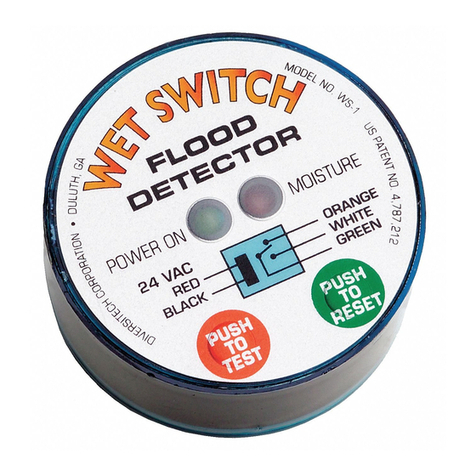
DIVERSITECH
DIVERSITECH Wet Switch WS-1 instructions
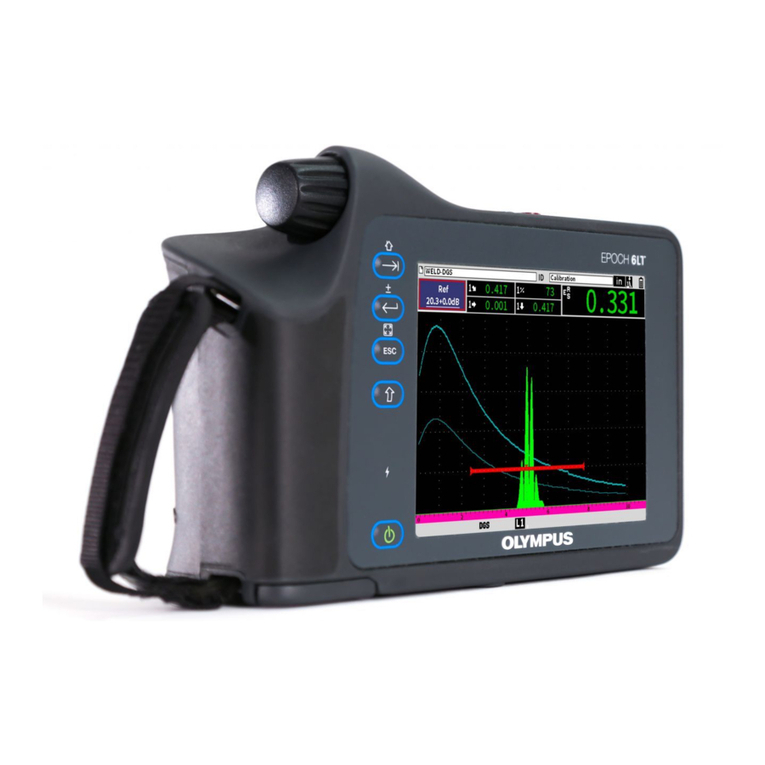
Olympus
Olympus EPOCH 6LT Getting started guide

olympia electronics
olympia electronics BSR-5036 quick start guide
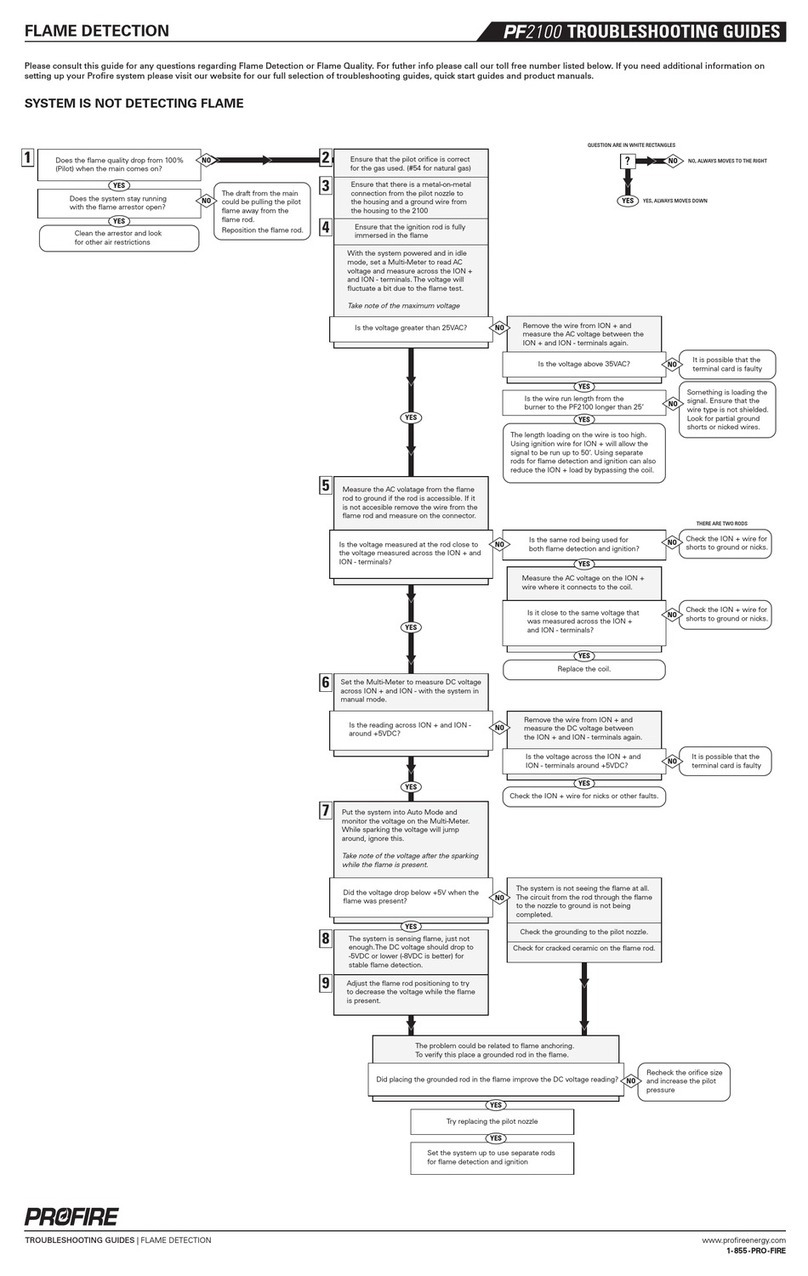
ProFire
ProFire PF2100 troubleshooting guide

